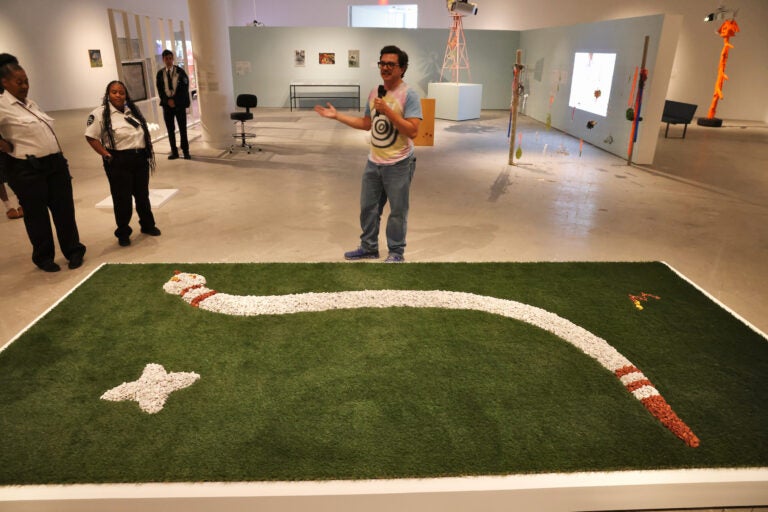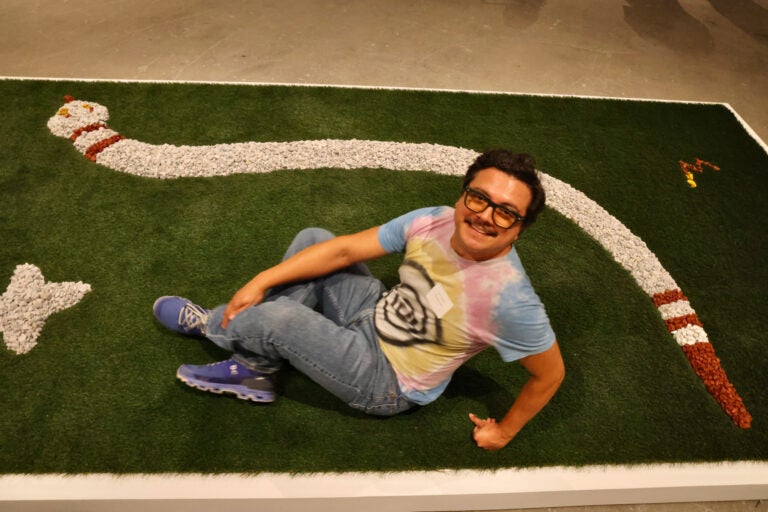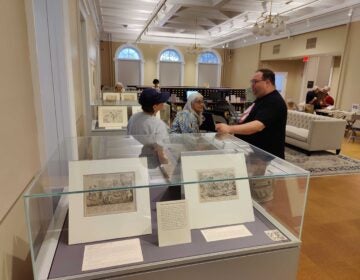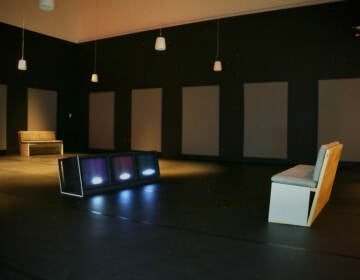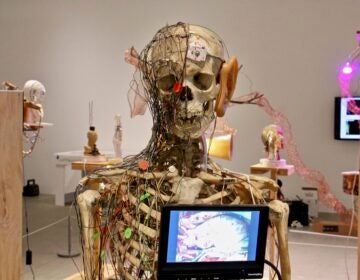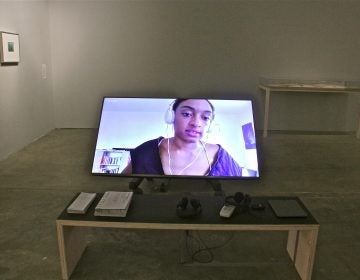‘Do whatever you want’: Philly’s Institute of Contemporary Art brings the freedom of the yard into the gallery
An exhibition of yard art at Penn ties urban artists to a mostly Southern creative vernacular.
From Philly and the Pa. suburbs to South Jersey and Delaware, what would you like WHYY News to cover? Let us know!
Artist and writer Josh Franco grew up in West Texas, where his grandfather used to make whimsical things out of found objects in the yard.
Hipolito Pole Hernandez, who died in 2015, did not call himself an artist. He just liked to make stuff.
“He had three little sheds in his backyard that were his workshops,” Franco said. “There were always sculptures, altered objects, all kinds of things coming out of them.”
Hernandez found a small windmill, painted it pink and affixed animal silhouettes: a hawk swooping down on a snake hovering next to a rabbit and a rooster. It describes a story, of a sort, about natural predators.
Franco included “Untitled (windmill)” in the exhibition “Where I Learned to Look: Art From the Yard” at the Institution of Contemporary Art at Penn, alongside other makers — so-called “outsider” artists who are not formally trained to giants of the fine art world, like Jeff Koons.
“One of the central questions of yard art, as a scholarly field, is ‘Why?’” he said. “Every artist has their own articulation of why they do it. In the text for the show we’ve used ‘world building.’ The one thing you can say that everybody shares is an impulse to build their own world.”
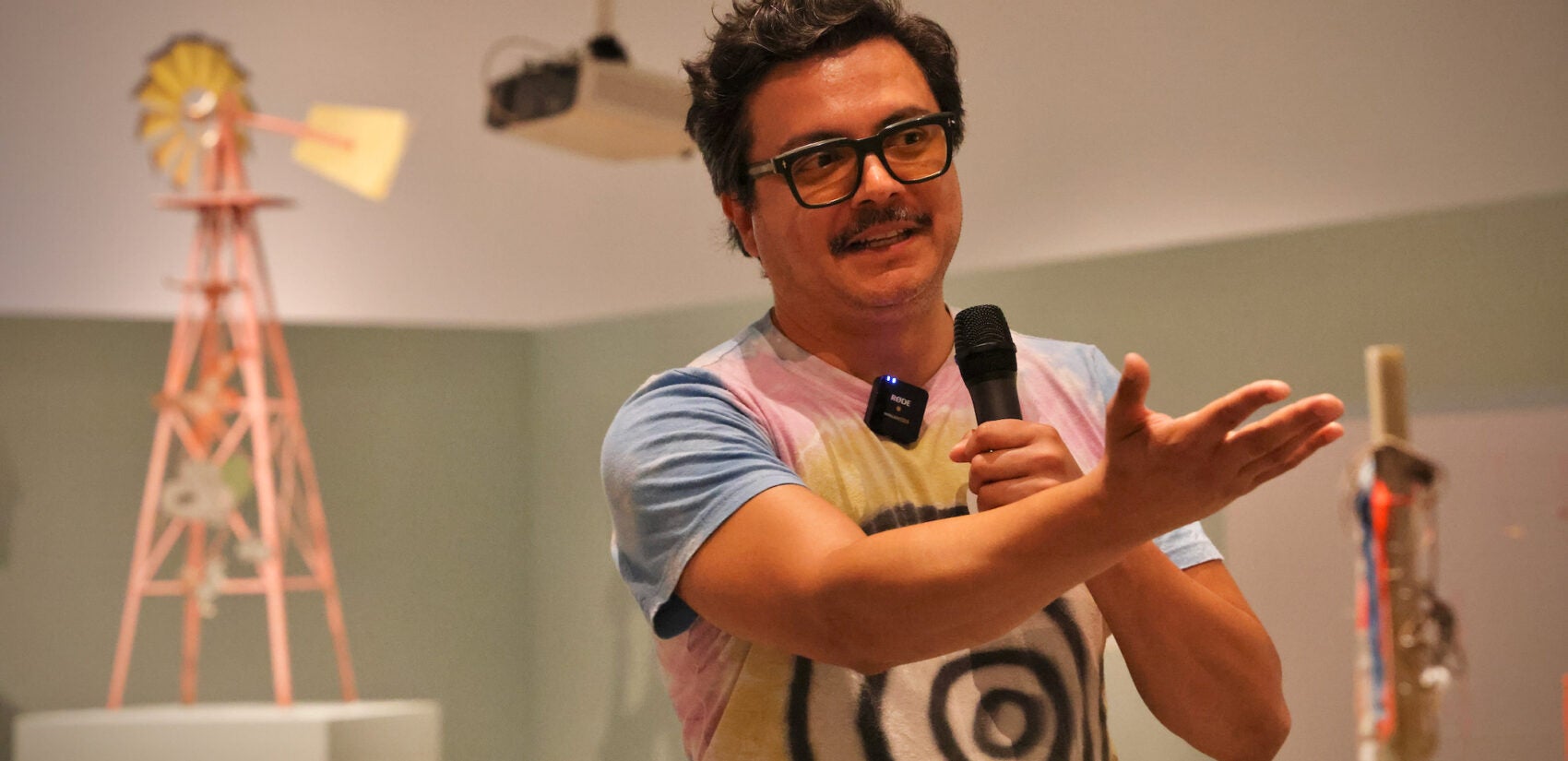
The car quickly catches your eye. A Volkswagen Beetle sits in the middle of the gallery, adorned with hundreds of metal pieces welded to its body. It is a functioning car: artist Clarke Bedford can sometimes be seen driving it around his hometown of Hyattsville, Maryland. It is part of a suite of cars and a similarly built art environment Bedford created called Vanadu.
The modified car looks rough and improvised, but Bedford’s intentions are very specific and intentional; he is a retired art conservator who spent 23 years at the Hirshhorn Museum in Washington working on modernist masterpieces.
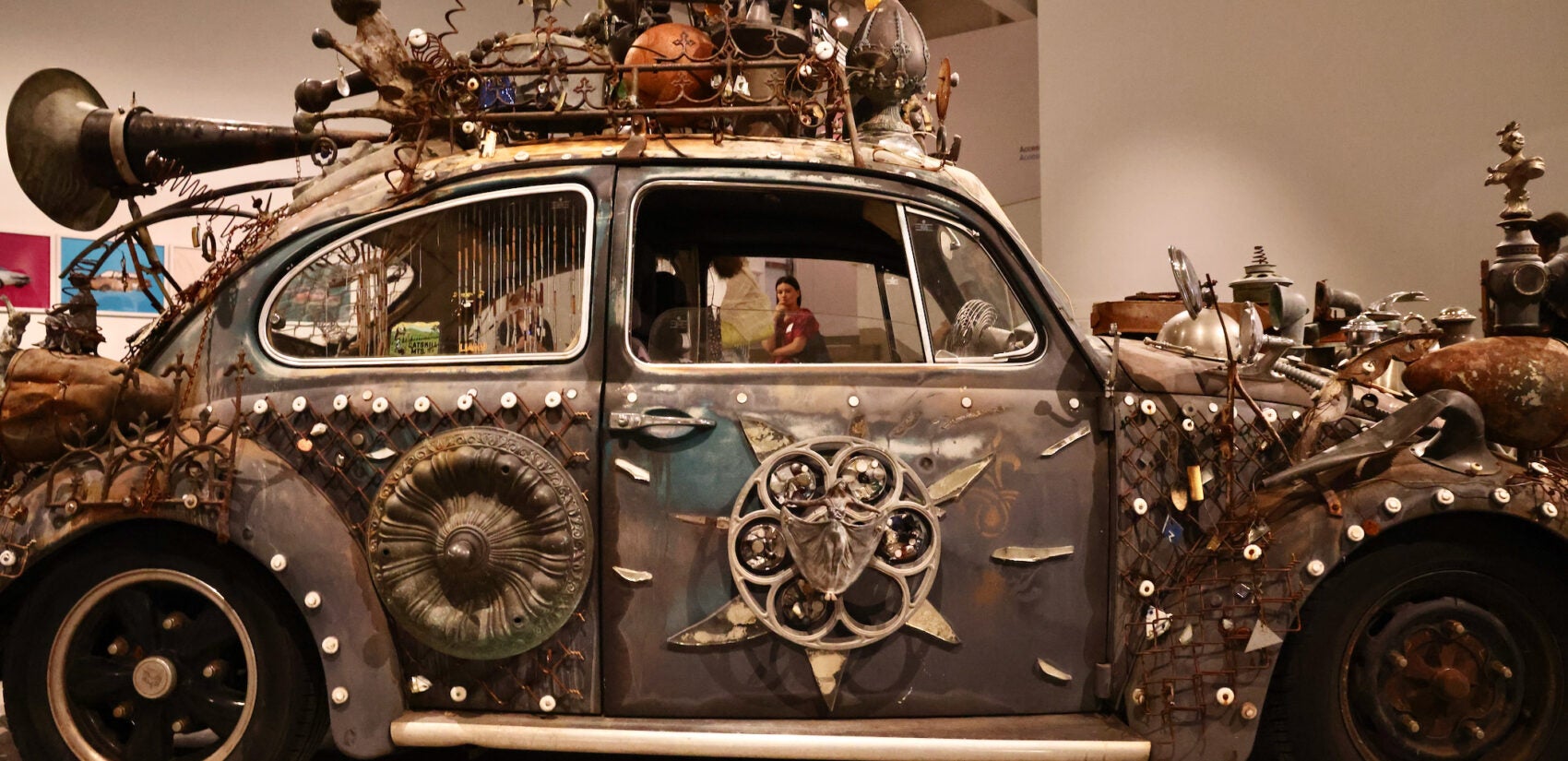
“He can make something that looks very ‘Chitty Bang Bang,’” Franco said. “But it’s very well-crafted because he has a background as a conservator and a scientist.”
Franco paired Bedford’s car with collaged photography of broken-down cars parked in front yards of the Crow reservation in Montana. They are part of the series “Rez Pop” by artist Wendy Red Star, of the Apsáalooke Indigenous people, highlighting how people living on the reservation adapt their homes and cars to restrictions imposed on them by federal housing and welfare institutions.
While yard art can appear anywhere, it is often associated with the American South. A recent exhibition at the Barnes Foundation featuring the work of William Edmonson laid out his sculptures as they may have appeared in the artist’s front yard in Nashville, Tennessee, where he made, showed and sold his work.
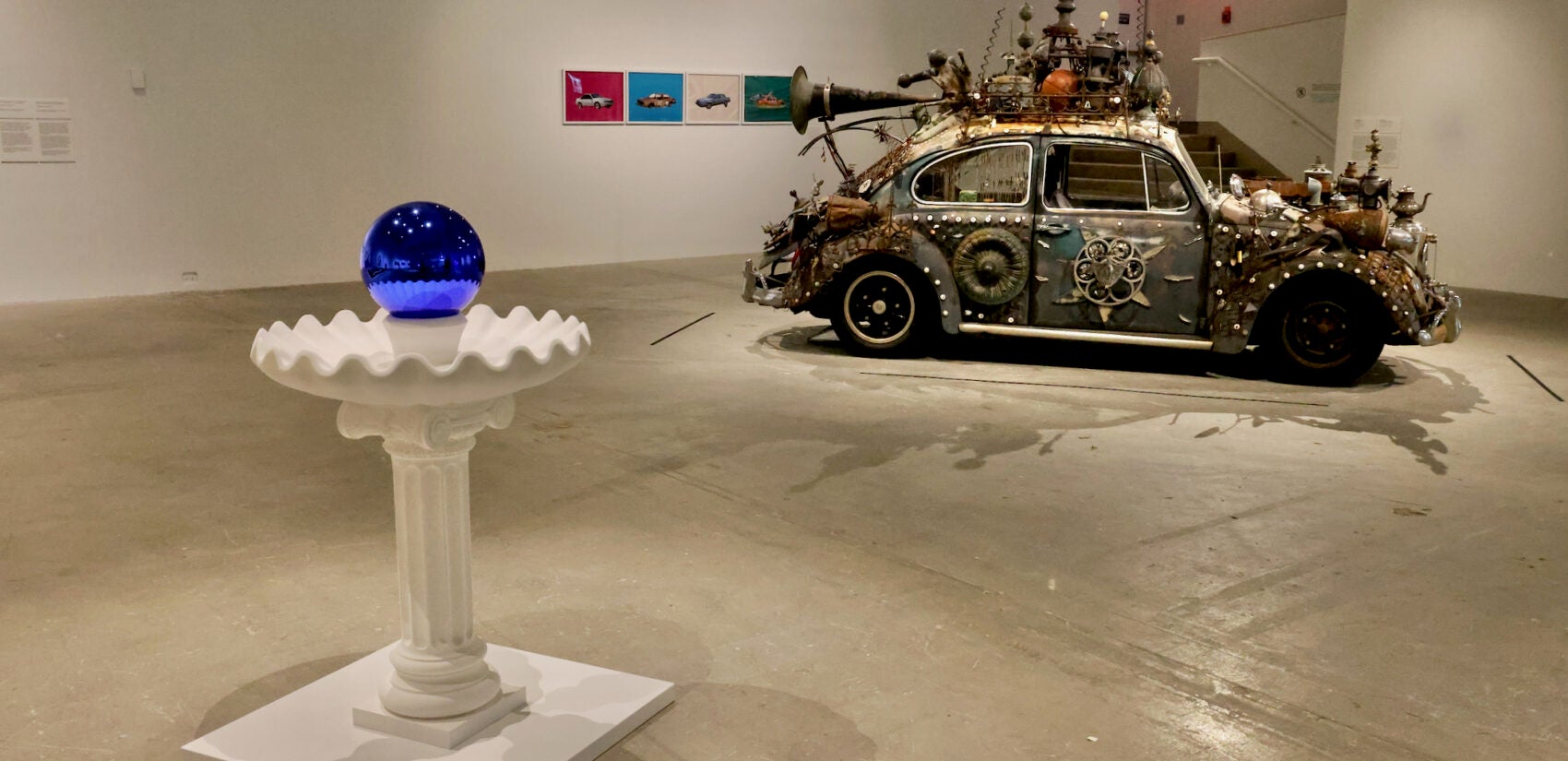
The white cube gallery of the ICA can feel like the antithesis of a yard. One of its partition walls is painted a particular specific shade of blue — haint blue — evoking the porches of the South. Haint blue is sometimes used on porch ceilings as a nod to Afro-Cuban spiritual beliefs that mimic the color of the sky in order to trick spirits into ascending toward the heavens rather than entering the house.
The exhibition also references the largely Southern tradition of bottle trees, hanging blue-glass bottles from branches as a form of spiritual protection. Artist vanessa german of Pittsburgh made three throne-like power figures called “nothing can separate you from the language you cry in” in 2021 that cascade with found blue glass.
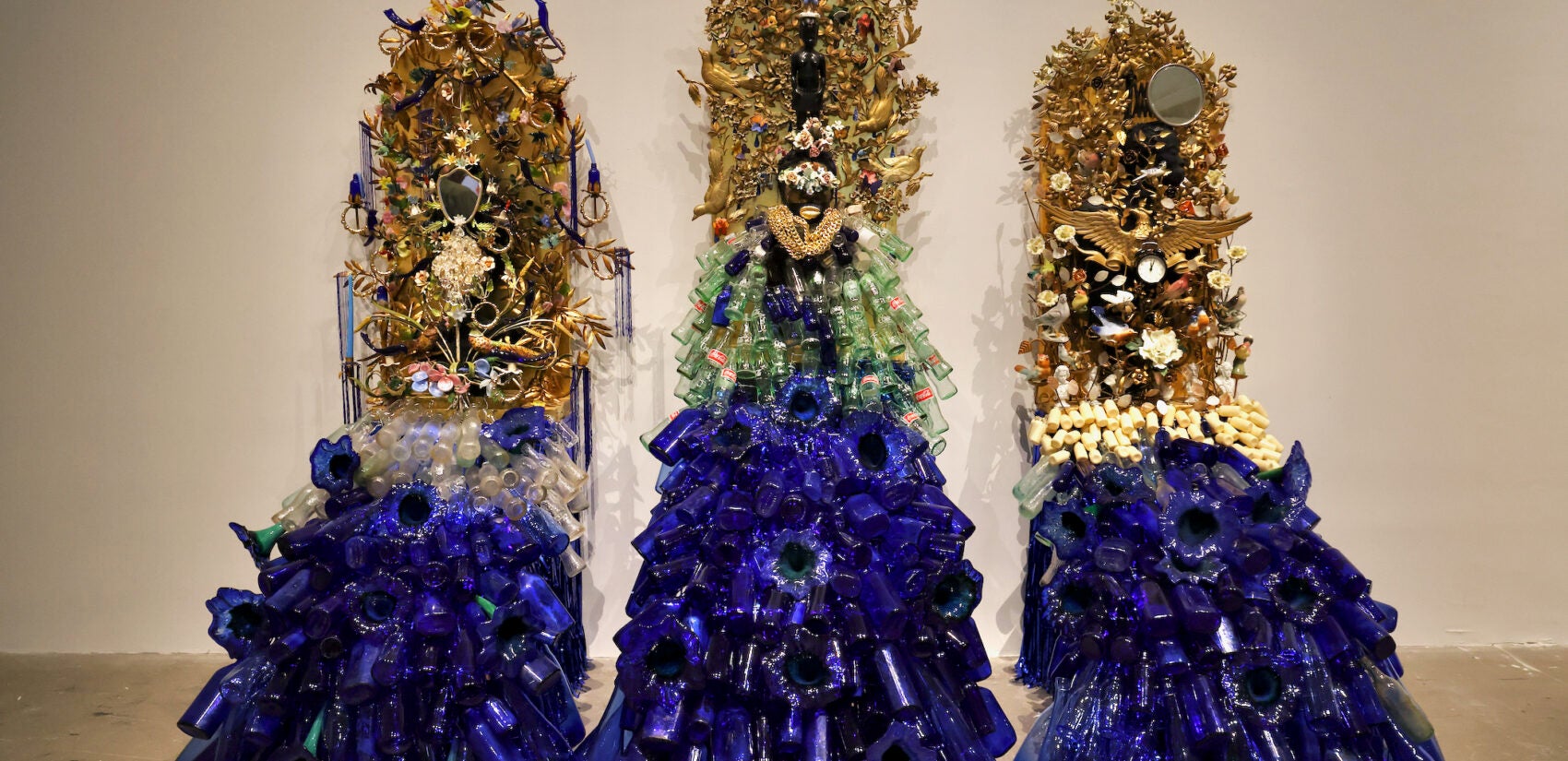
Franco put together “Where I Learned to Look” to expand the yard art concept beyond its usual Southern vernacular.
The exhibition includes work by artist Noah Puriffoy, who mostly lived in Los Angeles and has pieces installed in the desert of Joshua Tree, California, where an outdoor museum and foundation are based. Franco also brought in work by an Indigenous collective from British Columbia, the BUSH Gallery on Secwépemc land, featuring a video of trapping and dressing rabbits in a snow-bound yard. The gesture is a means by which the artists can reclaim Indigenous hunting practices in their own yards.
Some of the pieces on view would not strictly be seen in a yard, per se, such as painted window screens endemic to Baltimore’s urban rowhomes, which are yard-like in that they act as a visual buffer between a private home and a public sidewalk.
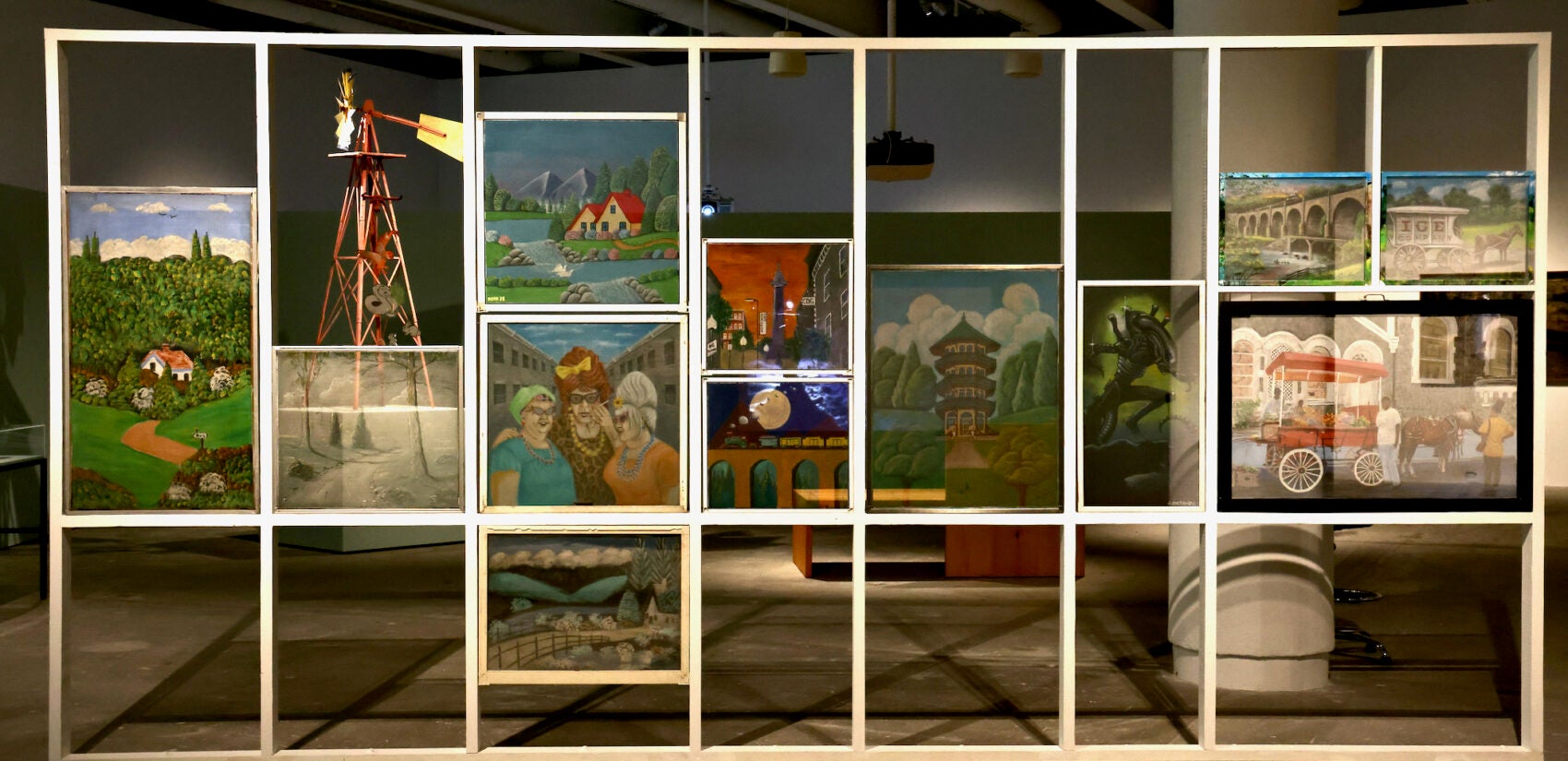
“I’ve been thinking a lot about the famous story of Sandra Cisneros, the author, painting her house purple in the King William District of San Antonio,” Franco said.
In the 1990s, the famous novelist flouted her historic neighborhood’s rules by painting her home a color similar to Barney the dinosaur, sparking controversy about personal expression vs societal standards.
Cisneros is not directly referenced in “What I Learned,” but she has been on Franco’s mind a lot.
“I think yard artists are — they don’t care what you think,” he said. “That’s part of the license of the show: Do whatever you want.”
“Where I Learned to Look” is Franco’s first stab at curating an exhibition. ICA’s chief curator Hallie Ringle handed Franco the keys to the gallery in order to give a lesser-known art movement its due in Philadelphia.
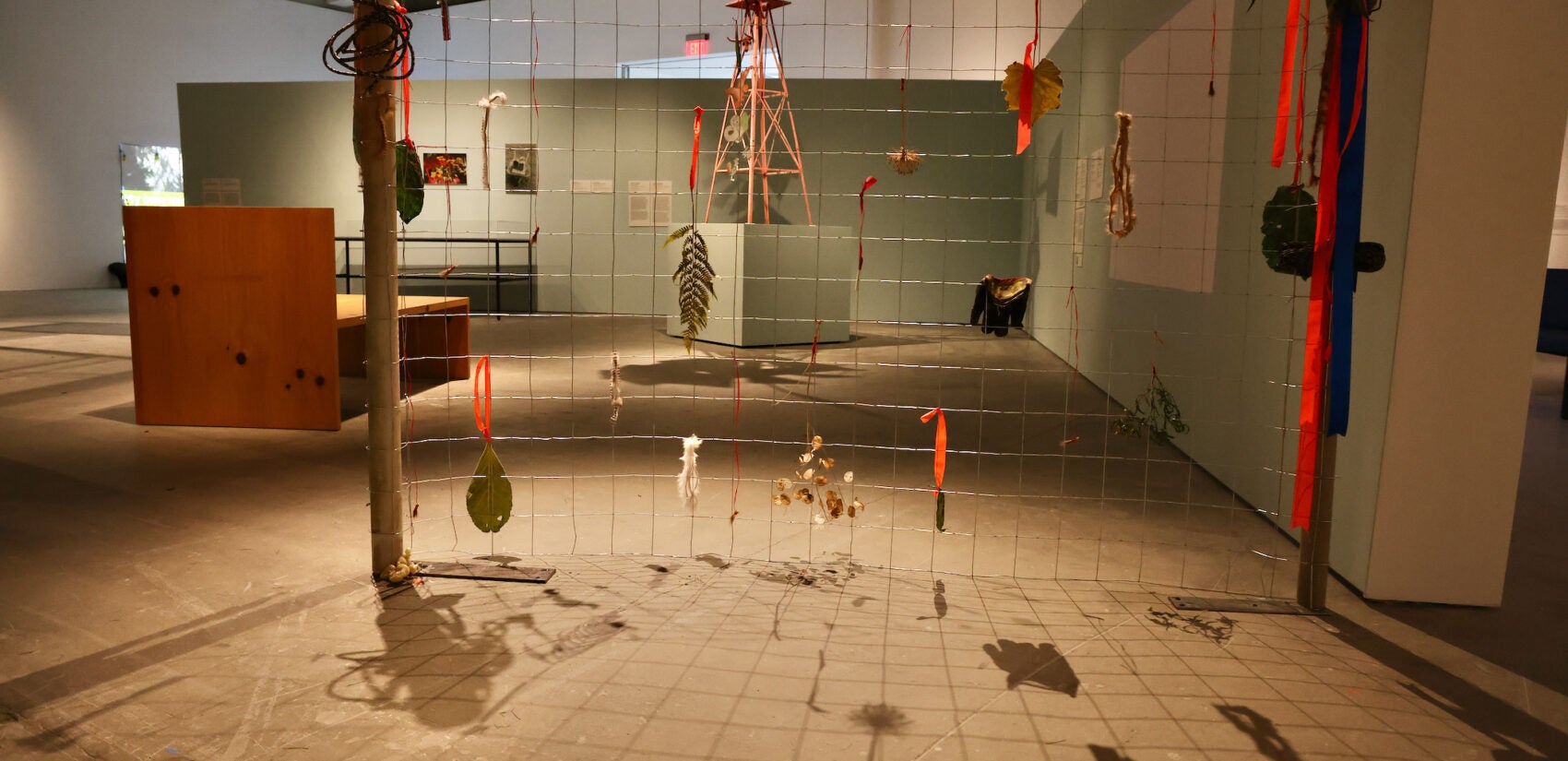
“The yard as a space of making and as an influential space is a very under-recognized idea in the formal gallery space,” she said. “I’m also from the South. I moved here from Birmingham, Alabama, where there are many yard artists. When I moved here I saw the Magic Gardens and thought, ‘Now this is a way of making that really does speak to Philadelphia.’”
“Art From the Yard” invites visitors to actually step outside into something resembling a yard. On ICA’s second floor terrace is an oversized cornhole game by the artist Finnegan Shannon, encouraging visitors to toss bean bags into a hole the size of a trash can mouth.
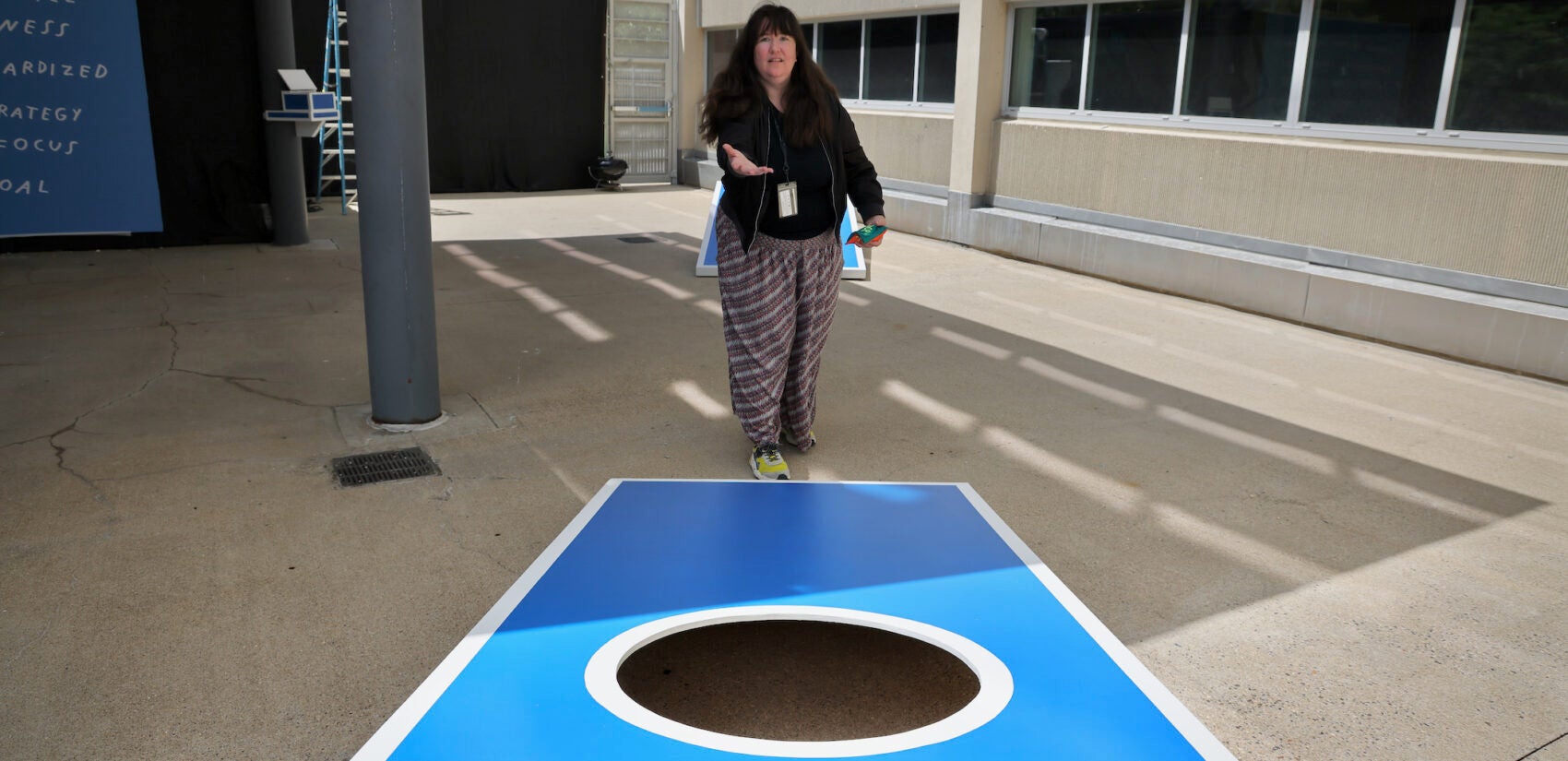

Saturdays just got more interesting.
WHYY is your source for fact-based, in-depth journalism and information. As a nonprofit organization, we rely on financial support from readers like you. Please give today.



